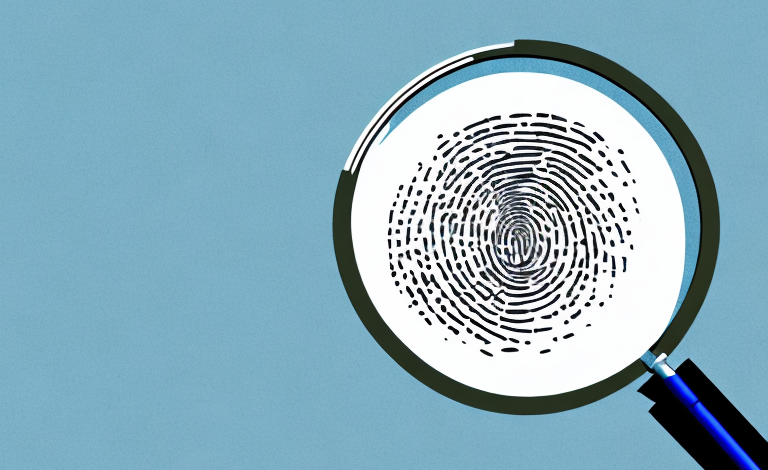Fingerprinting has been used in law enforcement for over a century, and while it’s commonly associated with the collection of prints from surfaces like glass and metal, many wonder if fingerprints can be retrieved from paper. The answer is yes, but it’s not always a straightforward process. In this article, we’ll explore the science behind fingerprinting and various techniques used to lift fingerprints from paper surfaces.
The science behind fingerprinting
Fingerprints are unique to each individual and are created by the ridges, furrows, and valleys on our fingers. These patterns are formed in the womb and remain unchanged until the decomposition of the body. Unlike DNA, fingerprints can be left on surfaces we touch, making them a valuable tool in criminal investigations.
There are three main types of fingerprints: arches, loops, and whorls. Arches are the simplest type, with ridges that enter from one side of the finger and exit from the other. Loops have ridges that enter from one side of the finger and curve around to exit from the same side. Whorls have ridges that form circular or spiral patterns.
Fingerprint analysis involves comparing the patterns, shapes, and minutiae (unique characteristics) of a suspect’s fingerprints to those found at a crime scene. This process can be done manually or with the help of computer software. Fingerprint evidence is admissible in court and has helped to solve countless crimes.
How fingerprints are left on paper
When we touch a surface, we leave behind a combination of bodily secretions such as sweat, oils, and skin cells. On paper, these oils and sweat can easily be absorbed into the fibers of the paper. The ridges of our fingerprints form a natural barrier, making it easier for these secretions to transfer to the surface of the paper.
In addition to the bodily secretions left behind on paper, the pressure of our fingers also plays a role in leaving behind a fingerprint. The ridges on our fingers create a unique pattern that is pressed onto the surface of the paper. This pressure can also cause the sweat and oils to spread out, creating a more defined print.
The importance of fingerprints in solving crimes
Fingerprints are often used as evidence in criminal investigations. They can link suspects to crime scenes, exclude innocent individuals, and be used to identify individuals with a criminal history. In many cases, fingerprints have been crucial in solving crimes and bringing perpetrators to justice.
Furthermore, fingerprints are unique to each individual and cannot be altered or changed. This makes them a reliable form of evidence in court cases. In addition, advancements in technology have made it easier to analyze and compare fingerprints, increasing the accuracy and speed of investigations. However, it is important to note that not all crime scenes will have usable fingerprints and other forms of evidence may need to be collected and analyzed.
History of fingerprinting in law enforcement
Fingerprinting has been used in law enforcement since the late 19th century. Sir Francis Galton is credited with developing the first systematic method of classifying fingerprints that is still in use today. Fingerprinting quickly became a popular method for identifying criminals, and by the early 20th century, police forces around the world were using it extensively.
Over time, fingerprinting technology has advanced significantly. Today, law enforcement agencies use digital fingerprinting systems that can quickly and accurately match fingerprints to a database of known criminals. This technology has greatly improved the speed and accuracy of criminal investigations, and has helped to solve countless cases that may have otherwise gone unsolved.
Techniques used to lift fingerprints off paper
There are various techniques that can be used to lift fingerprints off paper. One common method is to use fingerprint powder, which is brushed onto the surface of the paper. The powder adheres to the oils and sweat left behind by the fingers, making the ridges of the fingerprint visible. Once the fingerprint is visible, it can be photographed or lifted using tape.
Another method involves using chemicals to reveal the invisible fingerprints on the paper. For example, cyanoacrylate fuming involves heating superglue, which releases fumes that react with the hidden sweat and oils of the fingerprint, making it visible. These prints can then be lifted using tape or photographed.
A third method for lifting fingerprints off paper is called ninhydrin. This technique involves spraying a solution of ninhydrin onto the paper, which reacts with the amino acids in the sweat and oils of the fingerprint, causing it to turn purple. The purple print can then be photographed or lifted using tape. Ninhydrin is particularly useful for lifting fingerprints from porous surfaces, such as paper or cardboard.
Factors that affect the ability to retrieve fingerprints from paper
Several factors can affect the ability to retrieve fingerprints from paper. The first is the quality of the fingerprint. The better the quality of the fingerprint, the more likely it is that it will be retrievable. Other factors include how long the fingerprint has been on the paper, the type of paper used, and environmental conditions such as humidity and heat.
Another factor that can affect the ability to retrieve fingerprints from paper is the method used to lift the print. Different lifting methods may work better for certain types of paper or in different environmental conditions. For example, using a gelatin lifter may be more effective in humid conditions, while using a tape lifter may be better for lifting prints from glossy paper.
It is also important to consider the presence of any contaminants on the paper, such as dirt or oil, which can make it more difficult to retrieve a clear fingerprint. In some cases, it may be necessary to clean the paper before attempting to lift the print. Additionally, the age of the paper can also impact the ability to retrieve fingerprints, as older paper may be more fragile and prone to damage during the lifting process.
Limitations of fingerprint analysis in criminal investigations
Despite its usefulness in criminal investigations, fingerprint analysis is not foolproof. False positives and false negatives can occur, and human error and bias can also play a role. Additionally, if the fingerprint is not well preserved, it may not be able to be used as evidence in court.
Another limitation of fingerprint analysis is that it can only be used if there is a fingerprint to analyze. If the perpetrator wore gloves or took other measures to avoid leaving fingerprints, this method of analysis will not be useful. Furthermore, if the crime scene is contaminated or there are multiple fingerprints present, it can be difficult to determine which fingerprint belongs to the perpetrator.
Advancements in technology have helped to improve the accuracy of fingerprint analysis, but there are still limitations. For example, certain medical conditions or injuries can affect the appearance of fingerprints, making them difficult to analyze. Additionally, there is a lack of standardization in the way that fingerprints are collected and analyzed, which can lead to inconsistencies in results.
The role of technology in fingerprint analysis
New technologies have been developed to improve the analysis and identification of fingerprints. For example, automated fingerprint identification systems (AFIS) use computer algorithms to match fingerprints to those in a database, increasing accuracy and speed. Other technologies, such as laser ablation and 3D printing, are being explored as potential tools for making more accurate fingerprints.
In addition to these technologies, researchers are also exploring the use of nanotechnology in fingerprint analysis. Nanoparticles can be used to enhance the visibility of latent fingerprints, making it easier to identify suspects. This technology has the potential to revolutionize forensic investigations and improve the accuracy of fingerprint analysis.
Success stories of using fingerprints to solve crimes
There are countless success stories of using fingerprints to solve crimes. One well-known example is the case of the “Golden State Killer,” who was finally caught in 2018 after decades of evading law enforcement. Fingerprint evidence was a crucial part of the case, linking the suspect to multiple crime scenes.
Another success story of using fingerprints to solve a crime is the case of the “BTK Killer,” who terrorized Wichita, Kansas for over 30 years. In 2005, police were able to identify and arrest the killer, thanks to a DNA sample taken from a discarded cigarette butt. Fingerprint evidence was also used to link the suspect to the crime scenes.
Fingerprint evidence has also been used to exonerate innocent individuals who were wrongfully convicted of crimes. In 2008, a man named Jerry Miller was released from prison after serving 25 years for a rape he did not commit. New DNA and fingerprint evidence proved his innocence and led to his release.
Legal considerations surrounding the use of fingerprint evidence
While fingerprint evidence is often used in criminal investigations, it’s important to note that there are legal considerations surrounding its use. For example, the collection of fingerprints without consent may be considered a violation of privacy rights, and the admissibility of fingerprint evidence in court may depend on how it was collected and handled.
In addition, the reliability of fingerprint evidence has also been called into question in recent years. Studies have shown that there is a possibility of false positives, where fingerprints may be incorrectly matched to a suspect. This highlights the need for proper training and certification of fingerprint analysts, as well as the use of multiple forms of evidence in criminal investigations.
The future of fingerprint analysis in law enforcement
The field of fingerprint analysis is constantly evolving, and new technologies and techniques are being developed to make it more accurate and efficient. As these technologies become more accessible and widely used, it’s likely that fingerprints will continue to be an essential tool in criminal investigations.
So, can police get fingerprints off paper? The answer is a resounding yes, but it’s not always an easy process. By understanding the science behind fingerprinting, the various techniques used to lift fingerprints off paper, and the limitations of fingerprint analysis, we can better appreciate the value of this crucial tool in law enforcement.
One of the newest technologies being developed in the field of fingerprint analysis is 3D imaging. This technique allows for a more detailed and accurate analysis of fingerprints, which can be especially useful in cases where the print is distorted or difficult to read. Additionally, advancements in artificial intelligence and machine learning are being used to help identify patterns and matches in fingerprints, making the analysis process faster and more efficient.



